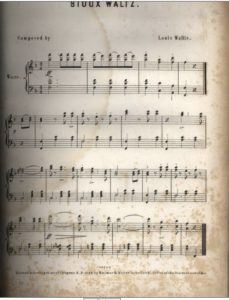What is a canvas, a lump of clay, or a hammer and chisel to the visual artist? They are the means- and therefore limitations by which the artist turns an idea into a product to be consumed by the masses. But while visual artists have an almost infinite amount of materials to use to express emotions, ideas, or stories- there are far less tools in music.
Notation is by many means, a prison that composers, arrangers, and other sonic explorers are trapped in when they go to document an idea or sound. Take for example, Frances Densmore’s controversial use of western notation to document traditional Indigenous ceremonial music. “Densmore used traditional Western notation for her transcriptions and at one point experimented with using graphic representations, which she intended to be used as an analysis of melody concurrently with Western notation.”1 This case all the way back in 1907 was one of the first clashes between cultures in notation versus practice. Densmore’s use of a limited notation style, which she even recognized as limited for the setting, led to the erasure of several defining characteristics of the music she did her field study on- ultimately doing the culture a disservice and misrepresenting the music.
But what happens when western musical expression is applied to Indigenous music alongside western notation? …Well you get this:
This is Louis Wallis’ “Sioux Waltz”. It is not a traditional waltz, it just has the extra musical connotation of some form of Sioux influence mashed together with the 3/4 pattern characteristic of a traditional western waltz. Again, notation (and the assumed connotations surrounding it) influence and make an odd sort of amalgamation of itself and the culture it is bisecting.
There is hope yet for western notation in our increasingly socially conscious society, however. Elaine Gould’s book “Behind Bars”3 explores the limits of western notation and how it can be manipulated to better record and represent ideas, cultures, and stories. Resources such as Gould’s are becoming more and more available, with communities surrounding engraving issues and how to respectfully fix them becoming more commonplace as notation software has brought many new composers- and therefore ideas into the fold of modern music. Wester notation may never be perfect, but it is important to continue improving upon it until it can be a properly helpful and respectful tool for the facilitation of art-making.

